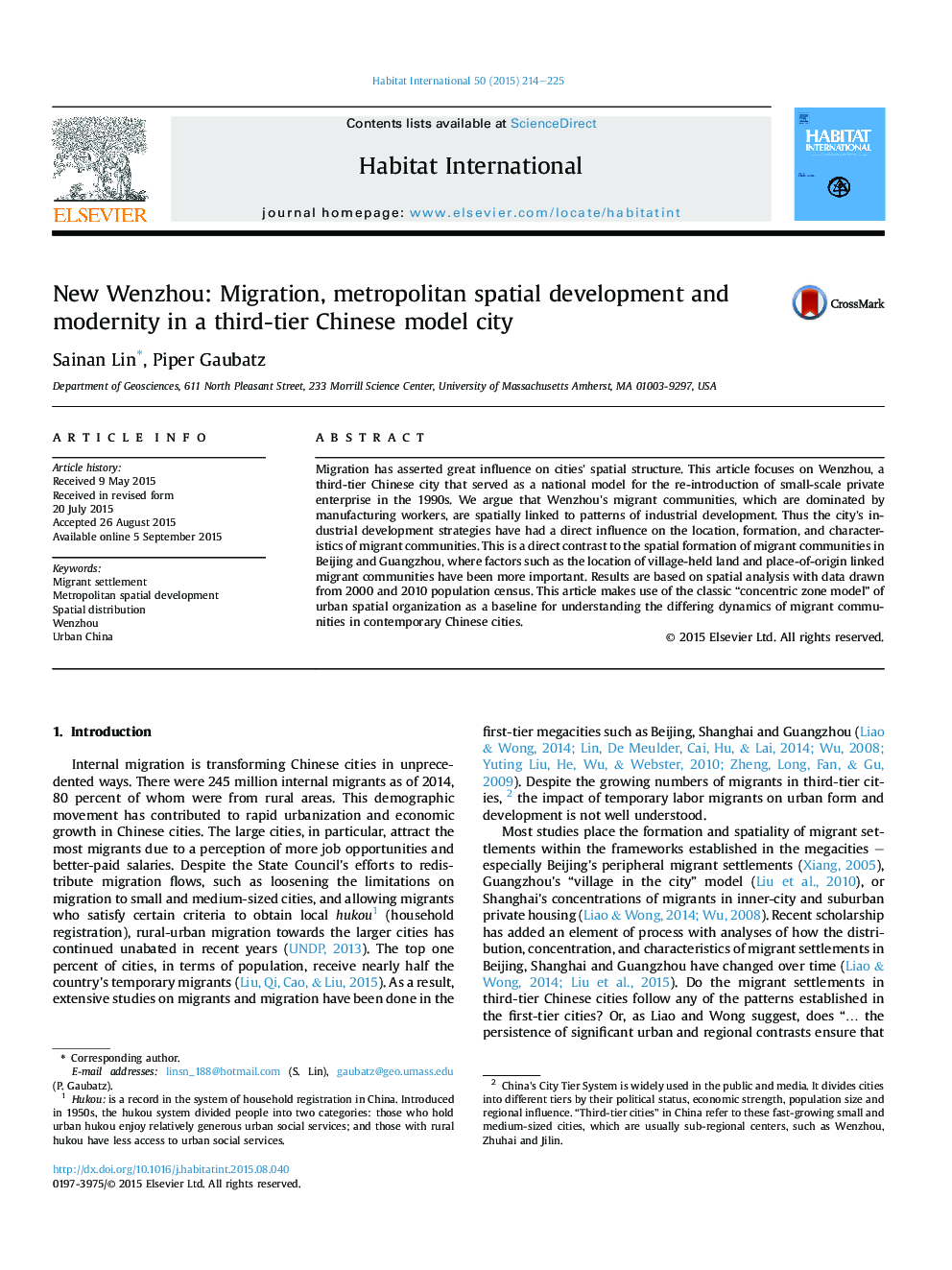| Article ID | Journal | Published Year | Pages | File Type |
|---|---|---|---|---|
| 7455936 | Habitat International | 2015 | 12 Pages |
Abstract
Migration has asserted great influence on cities' spatial structure. This article focuses on Wenzhou, a third-tier Chinese city that served as a national model for the re-introduction of small-scale private enterprise in the 1990s. We argue that Wenzhou's migrant communities, which are dominated by manufacturing workers, are spatially linked to patterns of industrial development. Thus the city's industrial development strategies have had a direct influence on the location, formation, and characteristics of migrant communities. This is a direct contrast to the spatial formation of migrant communities in Beijing and Guangzhou, where factors such as the location of village-held land and place-of-origin linked migrant communities have been more important. Results are based on spatial analysis with data drawn from 2000 and 2010 population census. This article makes use of the classic “concentric zone model” of urban spatial organization as a baseline for understanding the differing dynamics of migrant communities in contemporary Chinese cities.
Keywords
Related Topics
Social Sciences and Humanities
Social Sciences
Development
Authors
Sainan Lin, Piper Gaubatz,
